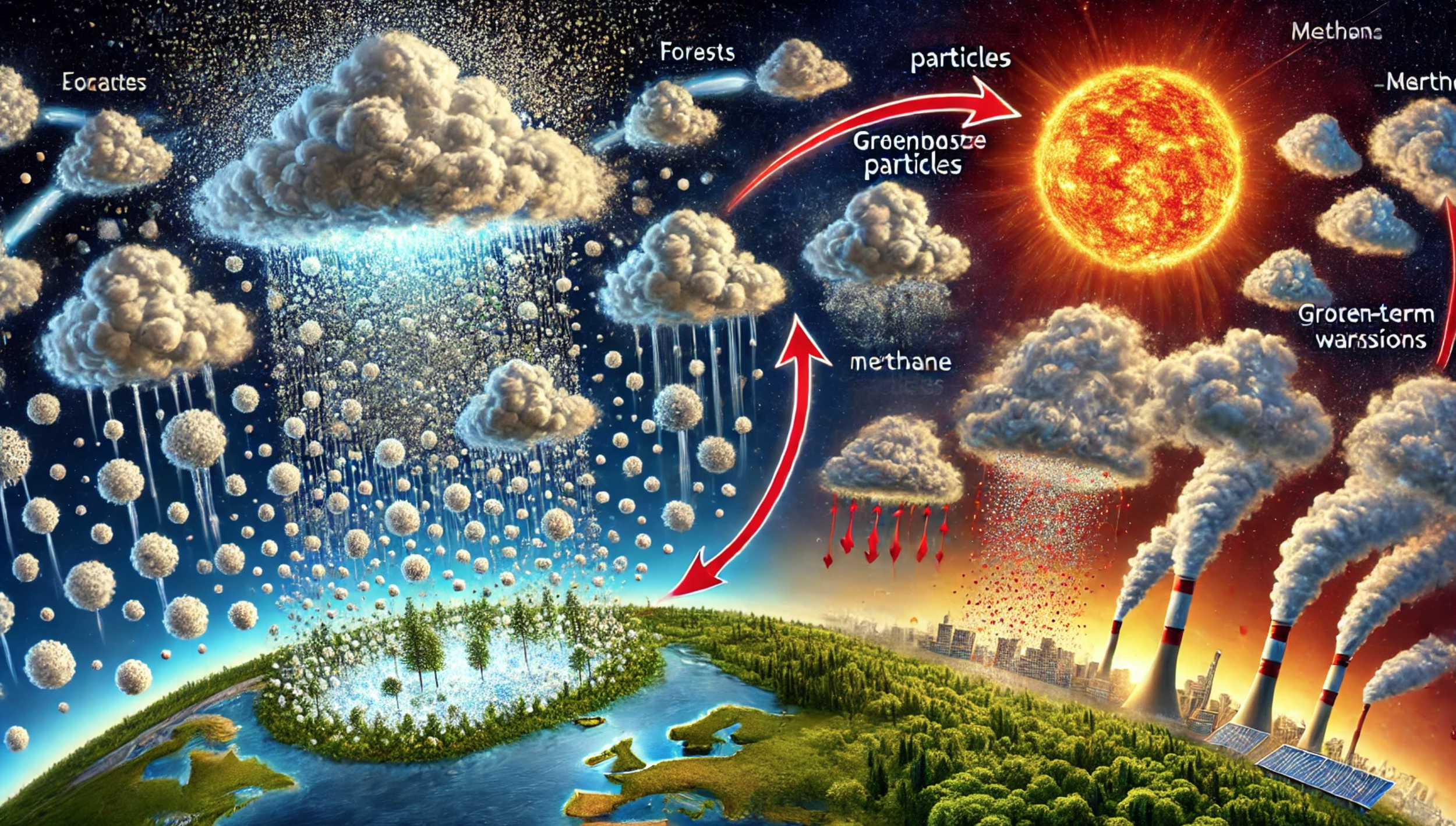A Double-Edged Sword: Do Human-Made Particles Cool or Warm the Earth?
Researchers performed the state-of-the-art instrumentation at the top of the Beijing Meteorological Tower to investigate the influence of new particles on cloud formation. Credit: Hao Li, Institute of Atmospheric Physics, Chinese Academy of Sciences
Climate Science’s Blind Spot: How Tiny Particles Affect Our Climate More Than We Thought
A recent study highlighted in SciTechDaily reveals that tiny atmospheric particles, known as aerosols, play a bigger role in climate dynamics than previously believed. These particles serve as the foundation for cloud formation, and their impact on cloud brightness and Earth’s temperature may have been underestimated by as much as 20%.
How Are These Particles Formed?
Aerosols come from both natural and human-made sources.
Natural sources include volcanic eruptions, sea spray, forest emissions, and wildfires.
Human activities, like burning fossil fuels, industrial processes, and agriculture, release pollutants that react in the atmosphere to form these particles.
A Double-Edged Sword: Do Human-Made Particles Cool or Warm the Earth?
While it’s true that aerosols from human activities can cool the Earth by reflecting sunlight and enhancing cloud brightness, they don’t tell the whole story. At the same time, burning fossil fuels releases greenhouse gases like carbon dioxide and methane, which trap heat in the atmosphere, leading to long-term global warming.
The cooling effect of aerosols is short-term—they linger in the atmosphere for only days or weeks. On the other hand, greenhouse gases remain for decades to centuries, causing persistent warming. Despite aerosols' temporary cooling, the overall result of human activity is net warming of the planet.
Understanding these dynamics is essential to refining climate models and making informed decisions about emissions and pollution control. It’s a reminder that while some pollutants may have unexpected effects, the long-term consequences of greenhouse gases remain the driving force behind climate change.
ChatGPT generated image with prompt: “How about a perspective of a cloud being formed by particles and the long term warming effect these particles have?”
And as always, remember:


